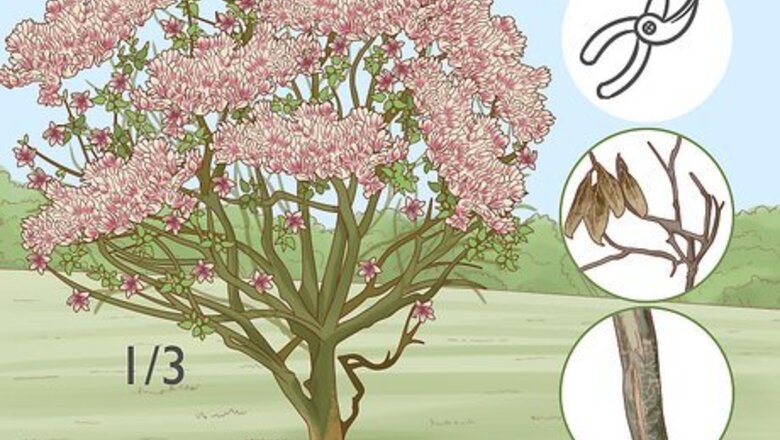
views
Removing Dead and Diseased Branches
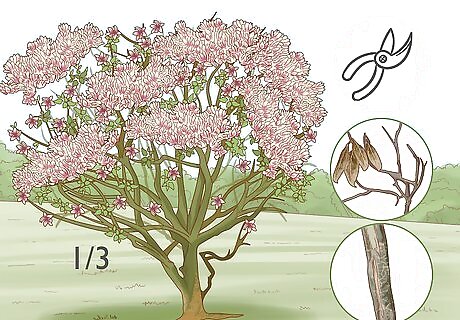
Prioritize dead and diseased branches over healthy branches. With magnolia trees, removing healthy, if unattractive, branches may cause more harm than good. You should never prune more than 1/3 of the tree at once, so always start with branches that are either dying or already dead. When in doubt, be conservative with what you trim. Magnolias are very sensitive to pruning. Over-pruning can damage the tree, reduce blossoms the following year, and make the tree more susceptible to disease.

Wait until the magnolia tree blooms for the first time. Depending on your climate and variety, this could be in spring or summer. The time after the first bloom is the only time you should do any significant pruning on your magnolia tree. Do not prune in winter or early spring, as the tree may not produce any blossoms the following year. The tree will also be more susceptible to disease. If you notice a diseased branch at a different point in the season, you may remove it to try to control the disease. Be warned, however, that this can damage the tree or make it susceptible to other forms of disease. Try treating the disease before pruning it.
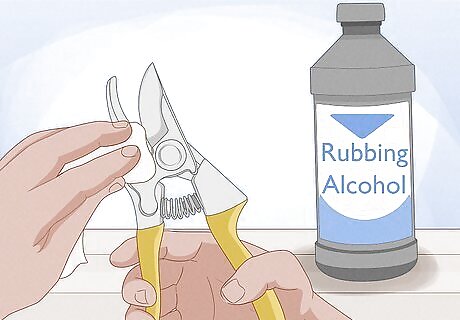
Disinfect your shears before and after pruning the tree. Wipe down the shears with rubbing alcohol, and wait a few seconds until it dries. If you are pruning multiple trees or plants, disinfect the shears in between each one.
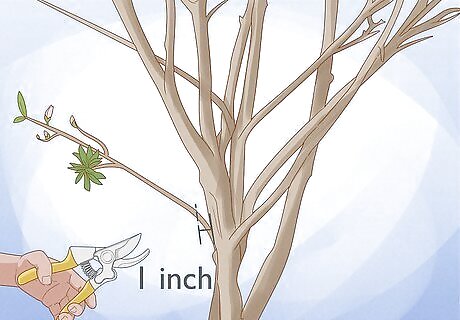
Cut off deadwood near the trunk. Deadwood is brittle, and it often does not produce leaves or flowers, even when the rest of the tree is in bloom. It may also be a slightly different color than the rest of the tree. Use lopping shears to remove the branch about 1 in (2.5 cm) away from the trunk. Deadwood should be removed, no matter how big or small the branch is.
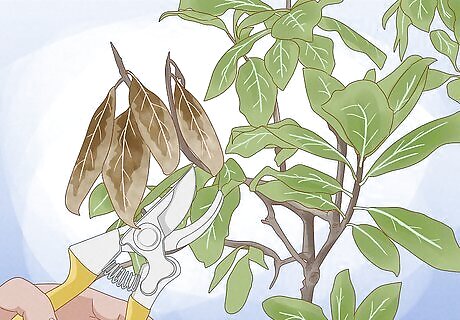
Identify if any branches show signs of disease. Discolored leaves and bark, drooping branches, or decaying wood can all be signs of disease. If the disease is limited to 1 or 2 branches, remove the branches where they meet the trunk. If you have cankers (dead open spots) or other signs of disease on the main trunk of the tree, it may be too late to treat it. Get an arborist to inspect your tree. In many cases, you may need to remove the entire tree. Common diseases for magnolias include verticillium wilt, fungal leaf spot disease, or algal leaf spot. In addition to removing the diseased branches, you may also need to apply a fungicide or neem oil.
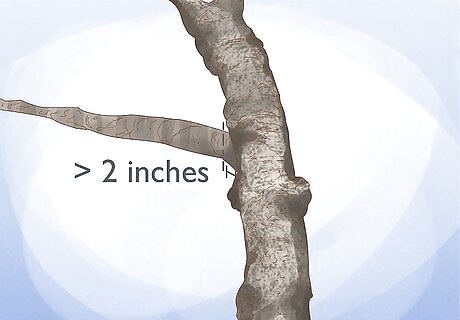
Use a handsaw to remove branches over 2 inches (5.1 cm) in diameter. Make a cut under the branch about 18 in (46 cm) away from the trunk. Only cut about 1/3 of the way through the branch. Make a second cut on the top of the tree about 1 in (2.5 cm) farther out. If the branch falls while you're removing the branch, these cuts will protect the tree, particularly the bark, from damage. Once you have made these cuts, you can remove the branch just above the branch collar. Leave about 1 in (2.5 cm) above the branch collar to protect the tree. The only time you should be removing branches this large is if they are dead or showing signs of disease. Do not remove large, healthy branches, as it could damage the tree, resulting in water suckers.
Controlling Growth
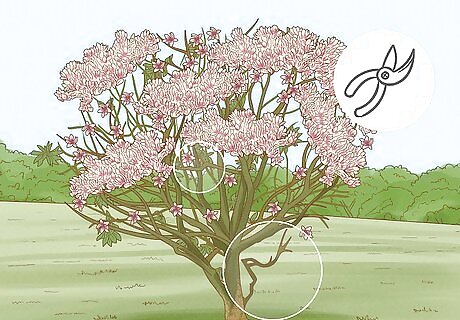
Select young, lower branches if you want to control growth. While you probably won't be able to control the shape of the tree, you can occasionally remove the younger branches to prevent overgrowth. Look for branches lower down on the tree that are around 1–2 in (2.5–5.1 cm) in diameter. Look for branches that are growing at an odd angle or which are crossing with other branches. These are good candidates to remove. Well-established branches or branches high on the tree should only be removed if they are dead or diseased. Removing large, healthy branches can damage your tree and prevent flowers from blooming. Because magnolias are so sensitive to pruning, it is a good idea to space out any major reshaping or trimming over the span of 2-3 years. While this requires a bit of waiting, the results will be worth it in the long run. You can prune healthy branches immediately after removing dead or diseased branches after the first bloom.

Trim new shoots with pruning shears to open up the tree. Look for thin, young side-shoots that are growing off the main branches. These are very thin, usually less than 1 in (2.5 cm) in diameter. Cut them off where they meet the branch. Trimming off these new shoots will reduce the density of the tree. They can help you make a more open, attractive tree. That said, only target small, young growths.
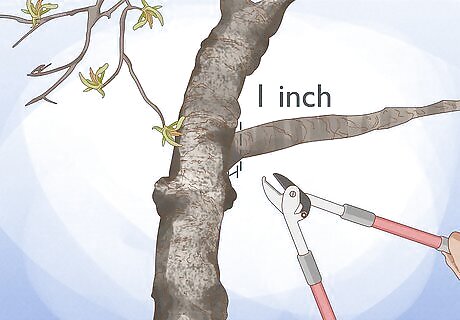
Cut off branches near the trunk with lopping shears. Follow the branch back all the way to the trunk. Make the cut just above the branch collar, which is a slightly wider area where the trunk and the branch meet. Leave about 1 in (2.5 cm) on the branch to prevent disease. Do not cut off the branches at the ends. Magnolias have a habit of water sprouting, which means that they will produce dozens of smaller stems and branches that cannot be easily controlled. Additionally, water sprouting often results in an unattractive tree, compared with the natural growth of a magnolia.
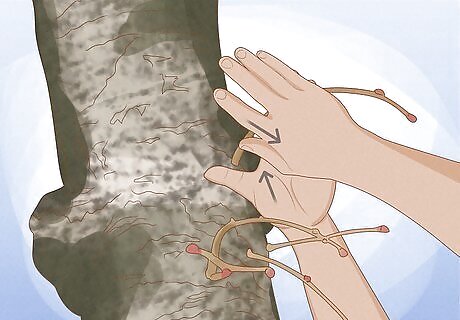
Rub water sprouts off the tree. Water sprouts are long, scraggly branches that grow where a branch was pruned or broken. They often grow in unsightly clusters. To remove these, rub the new shoots with your hand until they break off.
Practicing Safe Pruning

Wear protective gloves and goggles while you prune. Gloves will protect your hands from splinters and cuts while the goggles will keep wood chips from getting into your eyes. You can buy these at a garden or hardware store. If you are climbing on ladders, you may also want to wear a helmet and ask someone to act as a spotter.
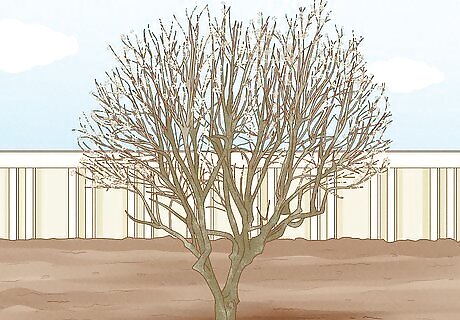
Prune the tree when it is dry outside to prevent disease. Disease can quickly infect a freshly cut branch, especially if it is damp or wet. To help prevent this, choose a dry, sunny day to prune your tree.

Ask someone else to spot you if you need to use a ladder. Some varieties of magnolias can grow very tall, so you may need a ladder to reach the branches. If this is the case, make sure that there is someone else watching you, in case you fall or injure yourself. This person should not stand where a branch can fall on them. Be sure to use safe ladder practices. Do not exceed the weight rating on your ladder, and make sure that it is properly secured and grounded before climbing it.

Hire an arborist if the tree has many dead or diseased branches. While you may be able to trim the lower branches yourself, it is generally a good idea to hire an arborist to take care of any branches that are very high on the tree or heavy. An arborist can safely treat any extensive issues that might be affecting the tree. If more than 1 branch is showing signs of a disease, an arborist can help you treat the tree without pruning too many branches. An arborist may advertise themselves as tree services or landscape services.


















Comments
0 comment